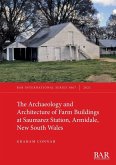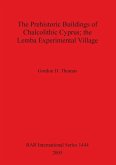This monograph studies the architectural history of ancient public toilets, called foricae. Using comparative data and historical, archaeological and literary sources, this comprehensive analysis of foricae offers a deeper understanding of their origin in the Hellenistic period. It also examines their diffusion in the ancient Roman world through advances in hydraulic technology and building techniques.Foricae became characteristic features of many Roman cities, playing an important civic and hygienic role. The study of their features reveals various plans, of which the peristyle is undoubtedly the most original. The independent and freestanding peristyle forica of Kos (Greece) is the most opulent example, and the exhaustive survey of the peristyle foricae of the Hadrianic Baths of Lepcis Magna (Libya) and of Gortyn (Crete-Greece) prove the importance of this typology in the history of functional architecture in the Roman Empire.
Hinweis: Dieser Artikel kann nur an eine deutsche Lieferadresse ausgeliefert werden.
Hinweis: Dieser Artikel kann nur an eine deutsche Lieferadresse ausgeliefert werden.








